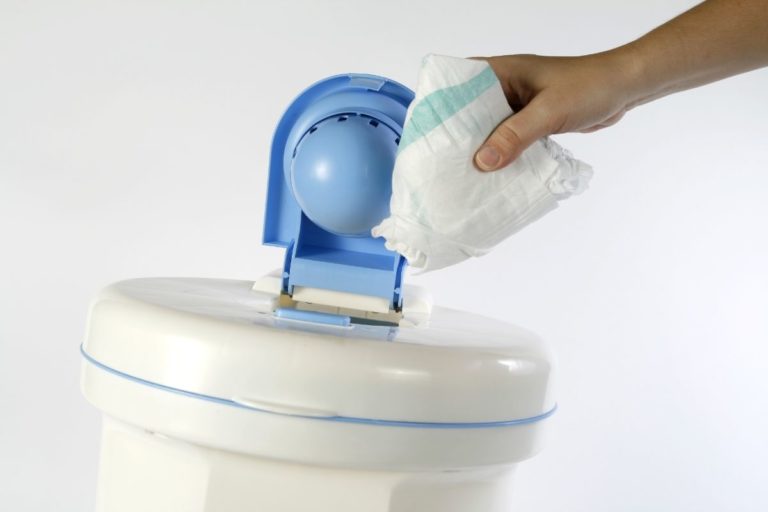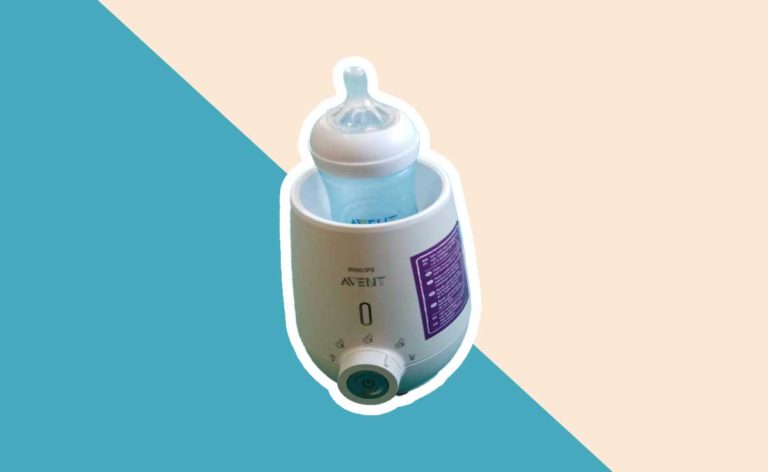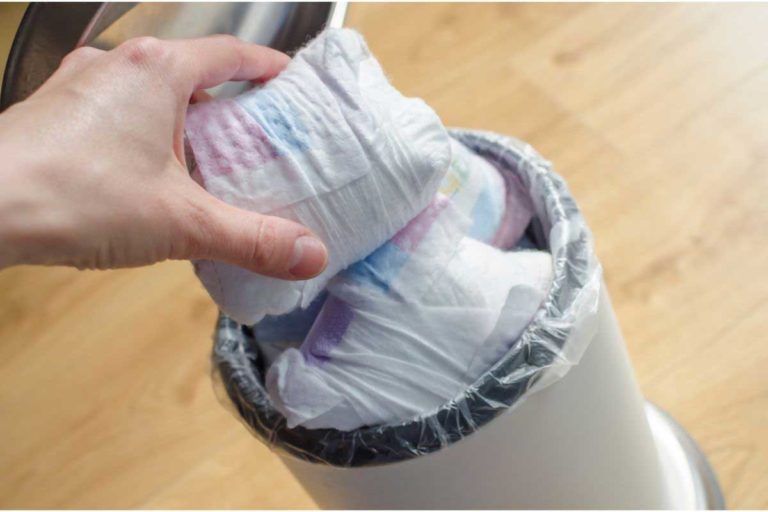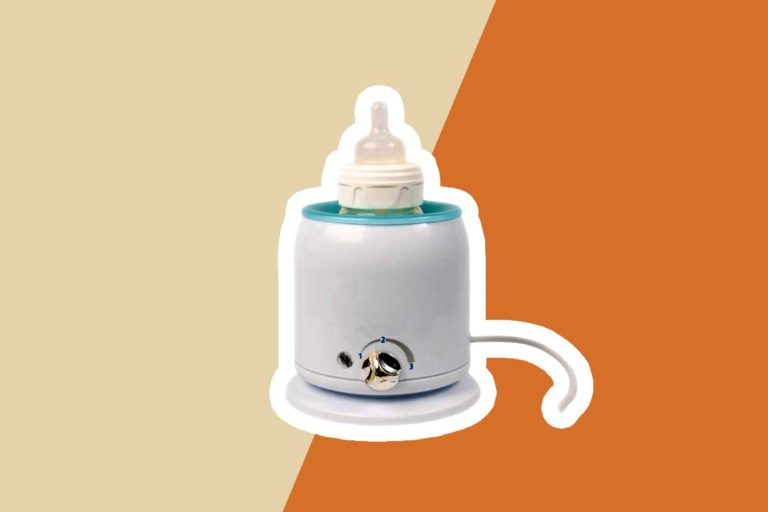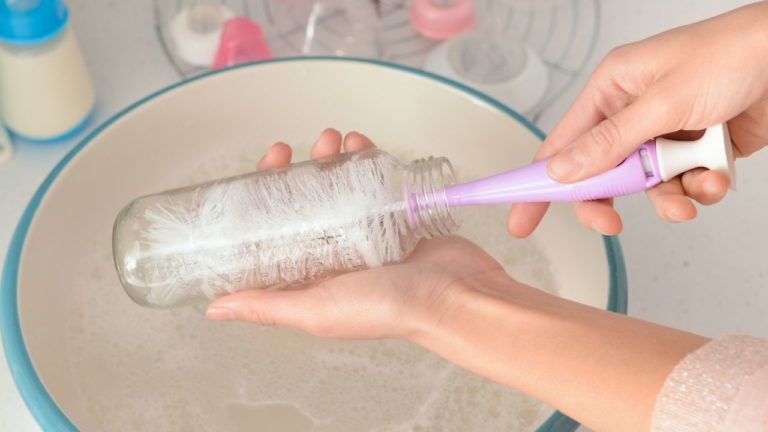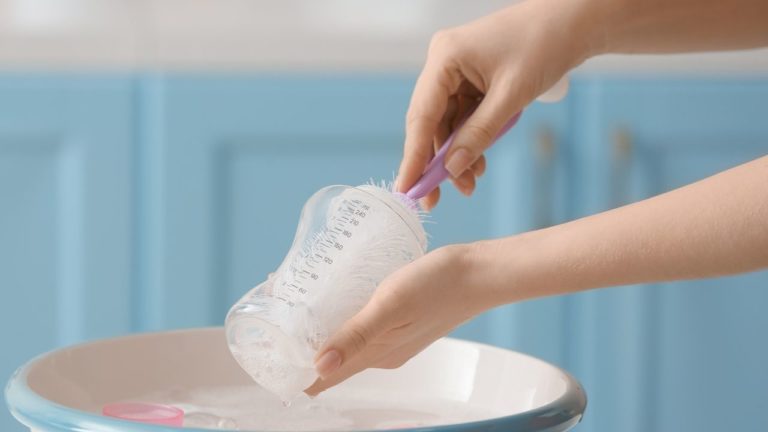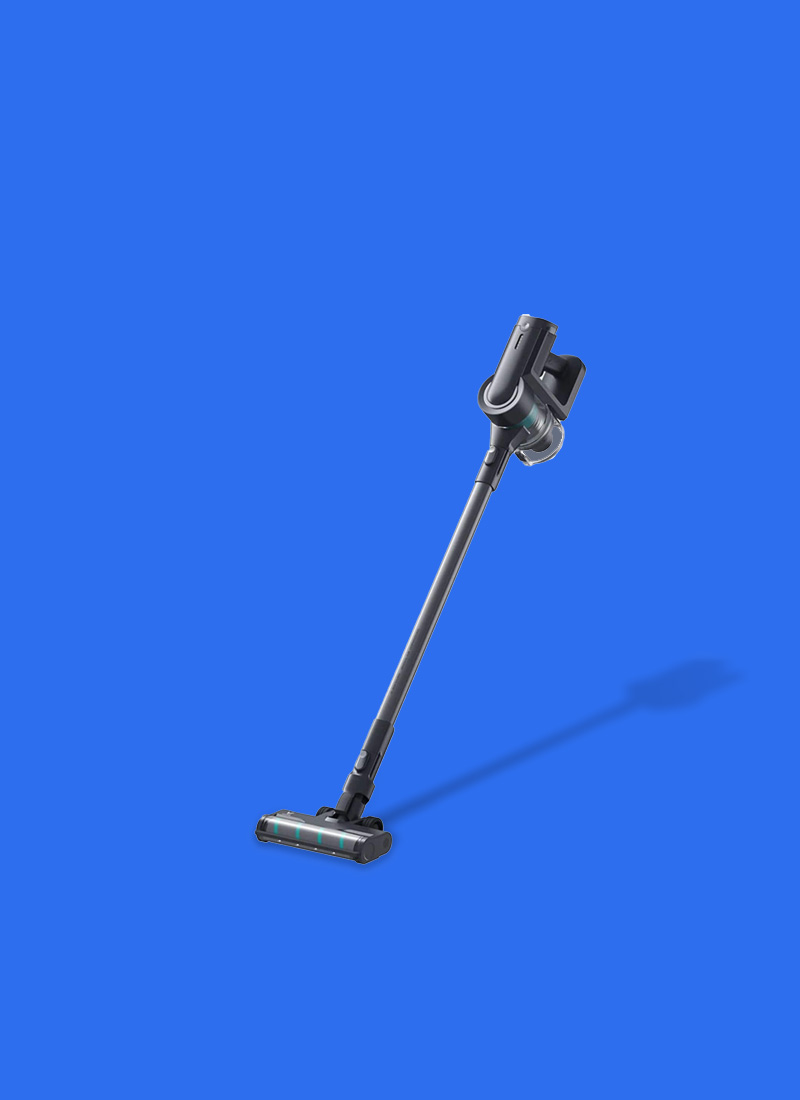ⓘ We are reader-supported and may earn a small commission at no additional cost to you if a purchase is made through one of our links.
Keep reading to know why nappy bins are a fantastic investment for any parent. Learn what they are, how it works, and the benefits of buying one. We’ll also talk about their special features and what makes them so versatile.
If you don’t have time to read the full article, click on the links to skip to that section:
What are nappy bins?
Nappy bins are special rubbish bins made to hold dirty diapers. They are designed with the singular purpose of making it easier, more hygienic and less smelly for parents to dispose of their babies’ soiled nappies.
How does a nappy bin work?
Nappy bins are pretty simple: they’re just a big, sealed container with a lid.
The most basic nappy bins have a foot pedal that opens and closes the lid. The lid has an airtight seal that keeps unpleasant odours from escaping.
The way it works is that you put the dirty nappy down a shoot into the bin below — and it’s sealed up inside, so there’s no smell or mess. When the bin is full, you remove the bag inside and tie it off for disposal. Then you replace the bag with a new one and keep going.
They come in various sizes and can hold between 20-30 nappies or even more at a time, so you don’t have to take them out to the wheelie bin every day.
If you’re interested in buying a nappy bin, then check out our roundup here.
What are the benefits of using a nappy bin?
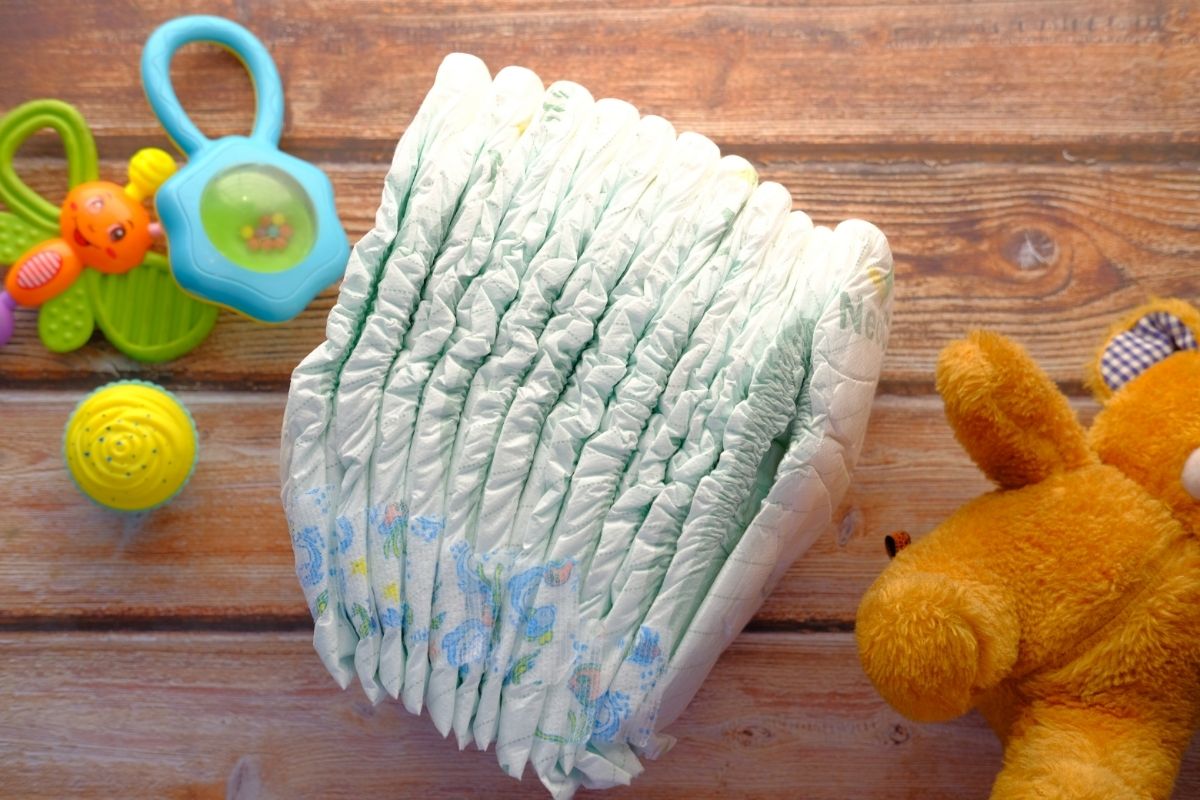
There are numerous benefits to buying a specialised nappy bin, let’s take a look at them
Say goodbye to the stink.
Nappy bins are a great way to keep your home clean and odour-free. They are specially designed to lock in nasty smells so that you can enjoy the best quality of life with your baby.
Make life easier for families with multiple children.
If you have more than one child in nappies, it means having to change several dirty nappies per day. This can mean many trips to the rubbish bin or toilet to dispose of them.
With a nappy bin, you can keep all those dirty nappies in one place until they can all be thrown away at once.
Protect against disease and pests.
Babies’ excrement is not only unpleasant but also carries disease-causing bacteria and parasites. Allowing it to come into contact with other people or surfaces can cause infection or illness.
A nappy bin lets you dispose of soiled nappies with no one coming into contact with them, protecting your family and others from infection.
It can be an aesthetic addition to any room.
While most nappy bins are designed to blend into the background of your home, some people like to use them as decorative statements.
Whether it’s choosing a bright colour or picking one that matches your child’s theme, there are plenty of ways you can use a nappy bin to make your nursery look even better!
Nappy bins are reusable even after your child has been potty trained.
Some parents actually use their old nappy bins as regular dustbins (once they’ve been thoroughly cleaned, of course).
Won’t my ordinary rubbish bin do the job?
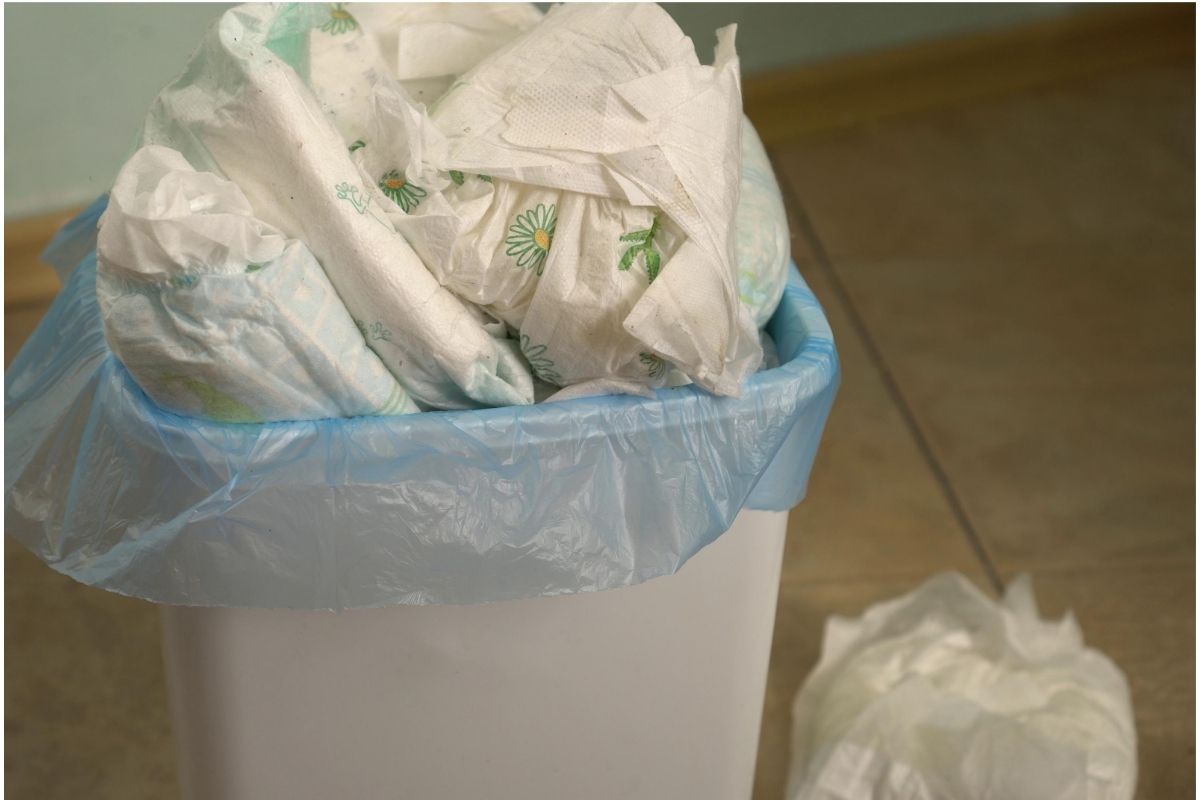
The problem is, of course, that while normal bins can hold used nappies, they are not effective at safely containing odours or bacteria.
Dirty nappies are smelly and unpleasant, which is why they need to be kept in a sealed container. Imagine those nasty smells mixing in with old food, trash, and other types of garbage the average household produces.
Babies can produce up to 12 poopy nappies and even more wet nappies a day, so you’ll be opening and closing that bin a lot. It also has to be huge in order to handle the number of diapers, wipes, and other things that you use to clean up your infant.
Will it fit in my nursery or bathroom?
Many parents choose to use a nappy bin in their child’s nursery room or bathroom, but they can be placed anywhere in the home where there is space. The units come in several different sizes, so it shouldn’t be too hard to find one that suits your needs.
How do you choose the right nappy bin?
Nappy bins come in all shapes and sizes, with a lot of different features and design elements to choose from.
Here are a few things you should consider:
Capacity
The first thing to ask yourself is how many nappies your baby will go through per day.
Obviously, if you have one child, your needs will be different from someone with two or three kids.
Some bins are better suited to smaller amounts and some to larger; double-check that the one you choose can cope with your daily output. Most bins on the market today should be able to handle as many as 20 nappies a day, though it’s always a good idea to check with the product description before buying.
Placement
Next, have a think about where you’d like to place your nappy bin. Some are designed for wall mounting, others for floor placement – this might make a difference depending on how much space you have available and how convenient the bin is when it comes time to change your baby.
Ease of use
Some nappy bins are easier to use than others, depending on how they’re designed. If you feel like you’re going to be fumbling around trying to open the lid or get the bag out, it might not be the best choice.
Appearance
Nappy bins don’t have to look bad — some even look quite nice, and could easily pass as a normal waste bin. You might choose one that matches the colour scheme of your nursery or bathroom.
What kind of special features and accessories do they come with?
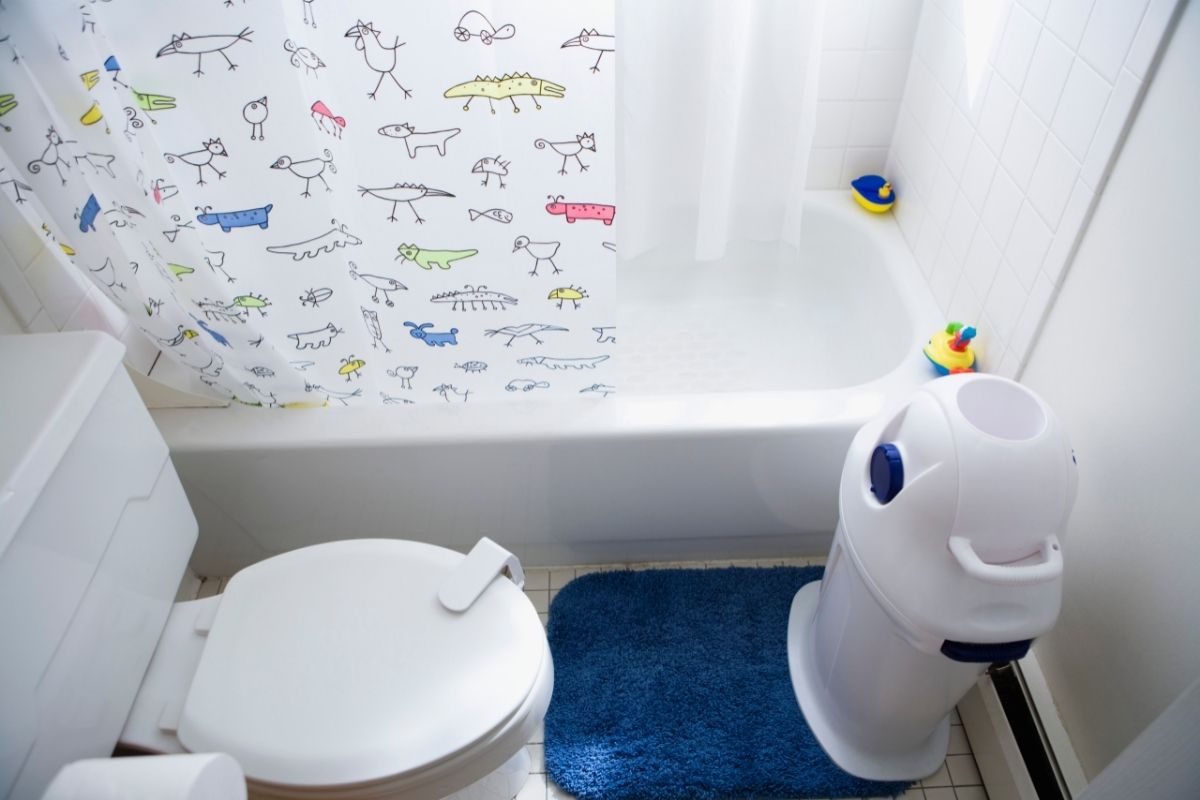
While some nappy bins are no-frills and just get the job done, others come with special features and accessories.
Some of the more popular enhancements include:
- Special disposal bags that lock in odours
- An antimicrobial coating that prevents bacteria from growing inside the bin
- Built-in deodorisers to keep the bin smelling fresh
- Clamps for sealing the bag after it’s full
- A storage compartment for nappies and wipes
What other things can I use a nappy bin for?
There are lots of other uses for nappy bins than just disposing of nappies, especially once your kids grow out of diapers.
They can be used to throw away feminine hygiene products, such as tampons and sanitary towels, pet waste, garden waste, and other types of rubbish that you don’t want to put down your toilet or sink drains.
Is it worth buying a nappy bin?
Yes, they’re a great investment. Nappy bins do more than just keep dirty nappies out of sight. They can keep your home smelling fresh and help prevent the spread of germs, especially with the use of odour neutralisers and air-tight seals.
Nappy bins are also convenient. They’re easy to use and empty, they’re compatible with most bin liners, and they’re large enough to accommodate larger quantities of waste.
Conclusion
Being a parent is a rewarding but difficult job, and purchases like nappy bins can help lighten the load. Having a safe and convenient option for diaper disposal allows you to enjoy time with baby without worrying about bad smells, germs, and other issues.

